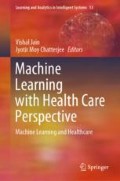Abstract
Skin cancer, a concerning public health predicament, with over 5,000,000 newly identified cases every year, just in the United States. Generally, skin cancer is of two types: melanoma and non-melanoma. Melanoma also called as Malignant Melanoma is the 19th most frequently occurring cancer in women and men. It is the deadliest form of skin cancer [1]. In the year 2015, the global occurrence of melanoma was approximated to be over 350,000 cases, with around 60,000 deaths. The most prevalent non-melanoma tumours are squamous cell carcinoma and basal cell carcinoma. Non-melanoma skin cancer is the 5th most frequently occurring cancer, with over 1 million diagnoses worldwide in 2018 [2]. As of 2019, greater than 1.7 Million new cases are expected to be diagnosed [3]. Even though the mortality is significantly high, but when detected early, survival rate exceeds 95%. This motivates us to come up with a solution to save millions of lives by early detection of skin cancer. Convolutional Neural Network (CNN) or ConvNet, are a class of deep neural networks, basically generalized version of multi-layer perceptrons. CNNs have given highest accuracy in visual imaging tasks [4]. This project aims to develop a skin cancer detection CNN model which can classify the skin cancer types and help in early detection [5]. The CNN classification model will be developed in Python using Keras and Tensorflow in the backend. The model is developed and tested with different network architectures by varying the type of layers used to train the network including but not limited to Convolutional layers, Dropout layers, Pooling layers and Dense layers. The model will also make use of Transfer Learning techniques for early convergence. The model will be tested and trained on the dataset collected from the International Skin Imaging Collaboration (ISIC) challenge archives.
Access this chapter
Tax calculation will be finalised at checkout
Purchases are for personal use only
References
G.P. Guy, C.C. Thomas, T. Thompson, M. Watson, G.M. Massetti, L.C. Richardson, Vital signs: melanoma incidence and mortality trends and projections—United States, 1982–2030. Morb. Mortal. Wkly. Rep. (2015)
“World Cancer Research Fund - Skin Cancer Statistics,” 2018. [Online]. Available: https://www.wcrf.org/dietandcancer/cancer-trends/skin-cancer-statistics. Accessed: 28-Oct-2019
American Cancer Society, “Cancer Facts and Figures 2019.” [Online]. Available: https://www.cancer.org/content/dam/cancer-org/research/cancer-facts-and-statistics/annual-cancer-facts-and-figures/2019/cancer-facts-and-figures-2019.pdf. Accessed: 29-Oct-2019
K. Kourou, T.P. Exarchos, K.P. Exarchos, M.V. Karamouzis, D.I. Fotiadis, Machine learning applications in cancer prognosis and predictio. Comput. Struct. Biotechnol. J. (2015)
E. Nasr-Esfahani et al., Melanoma detection by analysis of clinical images using convolutional neural network, in Proceedings of the Annual International Conference of the IEEE Engineering in Medicine and Biology Society, EMBS (2016)
A. Esteva et al., Dermatologist-level classification of skin cancer with deep neural networks. Nature (2017)
International Skin Imaging Collaboration, “ISIC 2018: Skin Lesion Analysis Towards Melanoma Detection,” 2018. [Online]. Available: https://challenge2018.isic-archive.com/. Accessed: 29-Oct-2019
P. Tschandl, C. Rosendahl, H. Kittler, Data descriptor: the HAM10000 dataset, a large collection of multi-source dermatoscopic images of common pigmented skin lesions. Sci. Data (2018)
International Skin Imaging Collaboration, “ISIC 2019,” 2019. [Online]. Available: https://challenge2019.isic-archive.com/. Accessed: 29-Oct-2019
D.A.V. Dyk, X.L. Meng, The art of data augmentation. J. Comput. Graph. Stat. (2001)
S.G.K. Patro, K.K. Sahu, Normalization: a preprocessing stage. IARJSET (2015)
O. Russakovsky et al., ImageNet large scale visual recognition challenge. Int. J. Comput. Vis. (2015)
C. Szegedy, V. Vanhoucke, S. Ioffe, J. Shlens, Z. Wojna, Rethinking the inception architecture for computer vision, in Proceedings of the IEEE Computer Society Conference on Computer Vision and Pattern Recognition (2016)
K. He, X. Zhang, S. Ren, J. Sun, Deep residual learning for image recognition, in Proceedings of the IEEE Computer Society Conference on Computer Vision and Pattern Recognition (2016)
K. Simonyan, A. Zisserman, VGG-16. arXiv Prepr. (2014)
C. Szegedy, S. Ioffe, V. Vanhoucke, A.A. Alemi, Inception-v4, inception-ResNet and the impact of residual connections on learning, in 31st AAAI Conference on Artificial Intelligence, AAAI 2017 (2017)
A.G. Howard et al., MobileNets. arXiv Prepr. arXiv1704.04861 (2017)
A. Baratloo, M. Hosseini, A. Negida, G. El Ashal, Part 1: Simple Definition and Calculation of Accuracy, Sensitivity and Specificity. (Emergency, Tehran, Iran, 2015)
Author information
Authors and Affiliations
Corresponding author
Editor information
Editors and Affiliations
Rights and permissions
Copyright information
© 2020 Springer Nature Switzerland AG
About this chapter
Cite this chapter
Nahata, H., Singh, S.P. (2020). Deep Learning Solutions for Skin Cancer Detection and Diagnosis. In: Jain, V., Chatterjee, J. (eds) Machine Learning with Health Care Perspective. Learning and Analytics in Intelligent Systems, vol 13. Springer, Cham. https://doi.org/10.1007/978-3-030-40850-3_8
Download citation
DOI: https://doi.org/10.1007/978-3-030-40850-3_8
Published:
Publisher Name: Springer, Cham
Print ISBN: 978-3-030-40849-7
Online ISBN: 978-3-030-40850-3
eBook Packages: Intelligent Technologies and RoboticsIntelligent Technologies and Robotics (R0)

